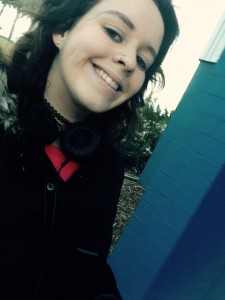part two
lights out for the territory – a disciplinary road map
wk7 Texts
In the first half of the lecture we discussed ‘texts’.
Where does the ‘textual analyis’ tradition come from?
‘effects’ tradition in communication studies: post WW2/mid 20th century turn against a particular idea of culture
Texts are:
- vehicles for the production of cultural meaning (sign systems)
- ‘texts’ in media, communications and cultural studies include cultural products, images, policy documents, social practices, institutions….
- ‘sites were we can see the social production of ideas and values happening before our eyes’
I learnt that there is not one true accurate meaning of ‘texts’. We must also consider semiotics: A ‘sign’ can be a visual, linguistic, aural, combination etc.
Signs have two parts:
: The signifier and the signifies
– Signifier/signified – dog/(picture of dog)
– Red = signifier
(colour of red) = signified/mental concept
We then had a look at an image:
http://visual-memory.co.uk/daniel/documents/s4B-sem-gloss.html#P
and discussed…
Denotation = literal of first order meaning and Connotation = cultural or 2nd order meaning
Denotated – man is throwing child into swimming pool
Connotated – a father throwing his child into the swimming pool
The second half of the lecture was dedicated to sound (one of my favourite elements).
Sound is defined as noise or music and is multi-directional: 360 degree angle. It is pervasive: can’t turn it off, it is everywhere and complexly layered: hear lots of sounds at any given time/can be experienced all at once.
Sounds can be prioritized by the ear: we can do this.
- We are continually absorbing and therefore we must constantly filter out sounds.
- Sound is intimate (e.g. radio dj talking to listeners)
- It is also subjective – methods of representations/aural semiotics (semiotic codes of sound place the listener in a mediated/imagined relationship with the subject of representation + two crucial codes – perspective and social distance)
Theo Van Leeuwen, ‘Perspective’ – “hierarchizes elements of what is represented”.
Sound Perspective (simultaneous sounds)
- figure: the focus of interest
- ground: the setting or context
- field: the background/ambient space
Social distance: consider the kinds of speech in terms of volume, pitch, relaxed, softness hardness (single sounds)
- intimate
- personal
- informal
- formal
- public
Technology of amplification and recording has uncoupled the two and allowed them to become independent semiotic vehicles – a whisper can be projected with the use of a microphone.
Soundscape: it is a representation of a place or an environment that can be heard rather than what can be seen.
Technical elements – pitch/volume
Temporal aspects – attack/sustain/delay
Interaction of sounds
Emotional/associative aspects of sound
Where the sounds originate from
How might we be able to create/obtain/treat them?
http://en.wikipedia.org/wiki/Phan_Thi_Kim_Phuc – what could be the figure, ground & field sounds?
Figure – children’s voices/screams
Ground – feet touching the floor as they run
Field – wind
Above are a whole bunch of notes taken in this lecture. This has been my favourite lecture so far as I was able to look deeper into ‘sound’. I hope to someday be able to explore even further into this area as I believe it is incredibly underrated and very often overlooked (especially in cinema).










